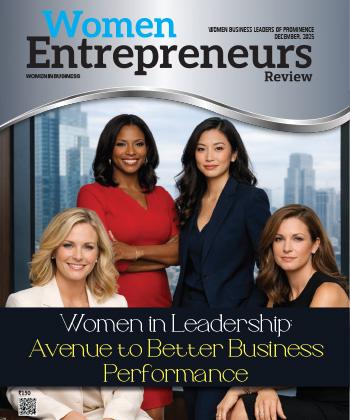
Insights To Impact-Does Long-Term Manufacturing get affected by Marketing Data?
By: Gauri Bhatia, Founder, The Unveiled Sagas | Friday, 4 November 2022
Gauri Bhatia turned into an author at 17. In 2017 she foundedThe Unveiled Sagas, which prides itself in being the “Most preferred PR and design Agency in Silicon Valley”. Over the past six years, the company has diversified into humanizing distant corporates by using personal experiences, moving tales of the founders, graphics, books, digital and print media and long-term campaigns that advocate large-scale impact.
Last week, when re-re-launching Apothecurry (We’re a start-up. We launch and die down multiple times a year), my team and I sat conflicted. One department insisted we launch it as a ‘trend brand’, that sold all that was new (focusing on margins). The other department insisted we advocate the functionality and sustainability of the brand (focusing on deep market penetration).
I have had no doubt insofar as the core purpose of the company is concerned. Of course, with time, I am expected to disrupt the manufacturing industry with my product. We’re very clear about the fact that we don’t want to launch another fancy skincare unit, just to take advantage of the skincare bubble in India (case and point, 100 ml serum/essence bottles in eastern countries such as Korea, Japan, and China, vs. 30 ml bottles in India, sell at almost the same price), but we’re also left unclear about the journey to the goal, the real-time demand, and the longevity of the product(ion).
For reference, our main company, TUS has been into research and data for over 8 years. So much so, that we launched a subsidiary by the name of TUS Insights to collect first hand data. However, our assistance in business advisory has often been contained to the superficial, packaging and distribution level. Of course, these decisions are based on numbers, but for Apothecurry, we had to indulge in a conversation much deeper and impactful, and ask ourselves:
Till what extent does consumer feedback and information loop, gathered through data, assist sustained manufacturing?
Three months of surveying later, the answer was:
When brands accept that changing their core manufacturing process to address consumer standards is
a. just as important to the customer as
b. ticking all the social responsibility boxes.
That means that no, just slapping on stickers claiming glowing skin, veganism, and ethics is not enough.
Now many-a-mentor argue that data on its surface tells you exactly where to go. It would make sense to seek the higher margin and wash your hands in the sacred Ganges (the English version is not as enthusiastic). Take, for example, this study that was conducted by our company for the skincare market. It disclosed that the Indian consumer market was divided into 2.5 user types:
- Maximalists- who are moving more towards the eastern countries, indulging in extensive skincare and specialized at-home treatments. High margin, highly susceptible to short-term trends.
- Minimalists Vs. 1- who kept their skincare to the bare minimum, almost similar to their male counterparts (Wash with anything that says ‘facewash’, prioritize companies like Himalaya, Ponds, Biotique, and BoroPlus). Low margin, low susceptibility to trends.
- Minimalists Vs. 2- those who keep their skincare to an educated minimum. They have high standards, but only a couple of products that they use for the rest of their lives. This includes people who use dermatologically approved skincare, such as CeraVe, Simple, Dove, Sebamed, and, Cetaphil, but also only what they deem necessary- which is facewash, moisturizer, and sunscreen. Medium susceptibility to trends, but medium margins.
The cost of immunity, to stay in the market, and to have a sustained demand, you need to be as stupidly simple to procure, as you are effective. The consumers should be flexible enough to accept solutions, but also loyal to the solution as an essential. This means that niacinamide can catch a break- I’m ok with aloe vera.
This brings us to category 2.2 of users, because they sway the necessities, increase the standards of bare minimum, and are always the foundation of anything exclusive. This category is often ignored, because the sway is so minute, and so long-lasting, that it is almost negligible.
Case 1: Neutrogena, 3 years ago established a demand for a micro-trend, called the hydra boost moisturizer. It was only when Ponds decided to 5X the tub size and 1/20X the cost, making it long-lasting, one-n-done, and cost-effective, did people really start to buy it. Minimalists 2.2 shifted their moisturization techniques, and now lightweight gel moisturizers are the new jam.
Case 2: Reminisce the great downfall of the toner. From CTM, derma-fluencers (or whatever you call them) began calling out the ‘Ph balancing’ and ‘pore closing’ claims of the flavored water. Soon, a sudden sway and two-and-a-half pandemic waves later, toner is only used by a small subset of skincare enthusiasts. Those, too, deliver a gentler version of their main skincare ingredient, almost aping another essential, such as sunscreen which is now ‘a powder/spray’, setting sprays, and moisturizing serum mists.
Looking for a cheat code to a trend-proof your manufacturing process (based on our research)?
- Sustainability and usability of the product are of prime importance. The only reason ‘conditioner’ became famous and essential, was because of the ease of use, the ‘coupled purchase’, and longevity of the product, both in terms of the single bottle, which could last you 2-3 months, and it’s a repurchase, for a decent conditioner would never not be available in the market.
- People have turned a blind eye to the bare minimum, so simply claiming what’s expected of you will do nothing. Indulge in one, meaningful CSR campaign, and devote your brand to the cause. We, for instance, employ people who are neurodiverse or intellectually challenged to manufacture our goods. We also have a vocational facility that enables them further and enriches their experience, making them capable, educated, and curious.
- Never put the consumer in a moral dilemma, because then, they will return to their daily sins. People care if their products are PETA approved, but if a herbal, plant-based, vegan shampoo is going to cost me 400 rupees, I, as a working, corporate woman, am moving back to head and shoulders.
With all the money I save supporting a chemical based, animal testing facility, I’ll get a hair transplant for when the chemicals make me go bald, and an NGO/old-age home for dogs.
Most Viewed
- 1 Women's Health Startup HerMD Closing Doors Amid Industry Challenges
- 2 5 Famous Women in Indian Armed Forces
- 3 Saudi Women No longer Require Male Permission for Clothing Choices, says Prince MbS
- 4 Kolkata Medtech Startup Innovodigm Raises Rs 5.5 Crore Seed Funding Led by IAN Group
- 5 Yamunanagar's Kashish Kalra Honoured after Securing 111th Rank in UPSC Civil Services Exam
- 6 Madurai Appoints Its First Woman Corporation Head
- 7 IAS Vijayalakshmi Bidari Appointed as the new Nagpur Divisional Commissioner
- 8 American Entrepreneur Lucy Guo Overtakes T Swift to become Youngest Female Billionaire
- 9 ICC Women's World Cup 2025 Trophy Showcased at Indore's Holkar Stadium
- 10 Aparna Saxena's Beauty Venture AntiNorm Launches in India
- 11 Vidya Nataraj Co-Founded BlueStone Jewellery & Lifestyle files IPO
- 12 5 Women Freedom Fighters of India
- 13 Dr. G Krishnapriya appointed as CEO for Trichy
- 14 M3M & Sirona Partner to Introduce Menstrual Hygiene Vending Machines in 15 Locations
- 15 Punjab Govt launches SHE Cohort 3.0 Supporting Tech-led Women Startups
- 16 Indian origin Lawyer, Sweena Pannu appointed as the US New Superior Court Judge
- 17 The Aurora Tech Award recognizes 4 Indian Women-led Startups
- 18 Kerala's Republic Day parade featured an all-female tableau
- 19 Manisha Kabbur Becomes Karnataka's First Woman International Karate Coach
- 20 Director K. S. Ravikumar's Daughter Maalica Ravikumar Launches Life Coaching Company 'Evergrowth Academy' for Women
- 21 Leezu's Raises Pre-Seed Funding to Accelerate Growth in Sexual Wellness Industry
- 22 Sattu: Super-easy summer drink for PCOS gut healing
- 23 Swathi Nelabhatla creates Sitha App, India's First Women-Exclusive Gig Platform
- 24 7 Timeless Female Kathak Dancers & their Iconic Legacies
- 25 Meet 7 Iconic Women Architects of Modern India & their Most Impactful Work
- 26 This Woman-led Insuretech Startup is Helping Bridge the Education Financing Gap in India
- 27 Women Leaders Share Lessons Learnt from India Women's WC Win
- 28 5 Enterprising Women Founders Powering Singapore's Tech & Innovation Landscape
- 29 4 Women. 4 Stories. One Vision for Smarter, Stronger Healthcare
- 30 Global Gender Gap Narrows to 68.8%, But Full Equality 123 Years Away: WEF Report 2025
- 31 Changemakers: 7 Women Entrepreneurs Taking the Make in India Movement Forward
- 32 Meet Lucy Guo, The Youngest Self-Made Female Billionaire Disrupting Tech
- 33 How Women are Driving India's Festive Online Shopping Surge






